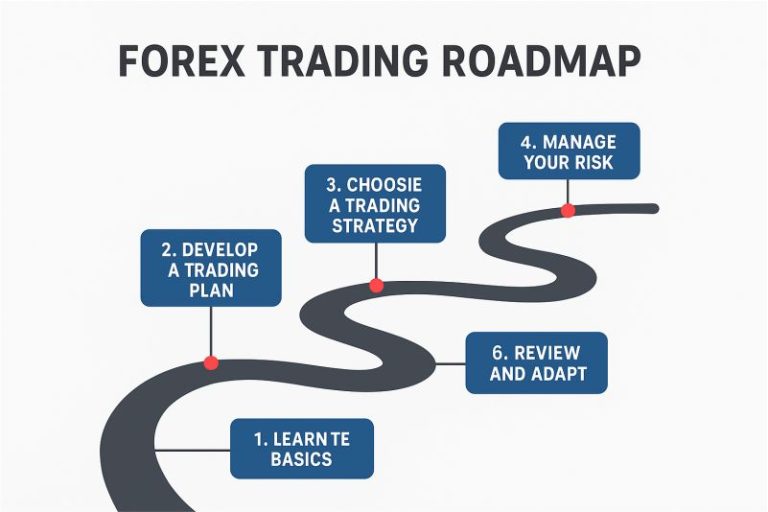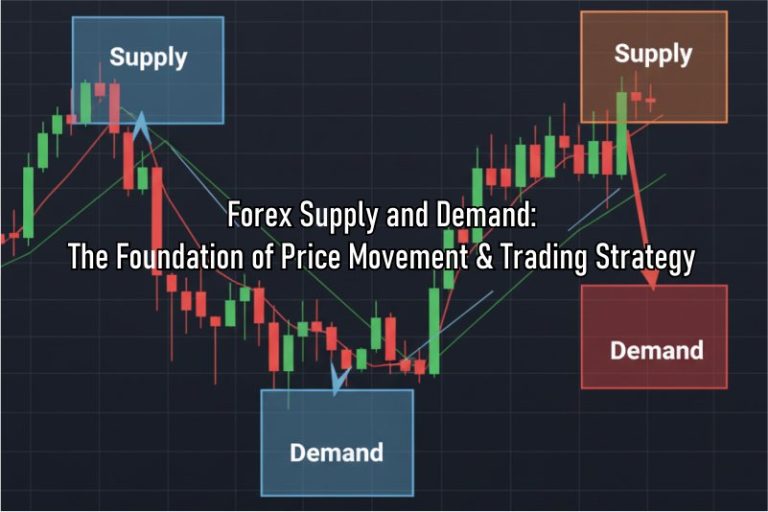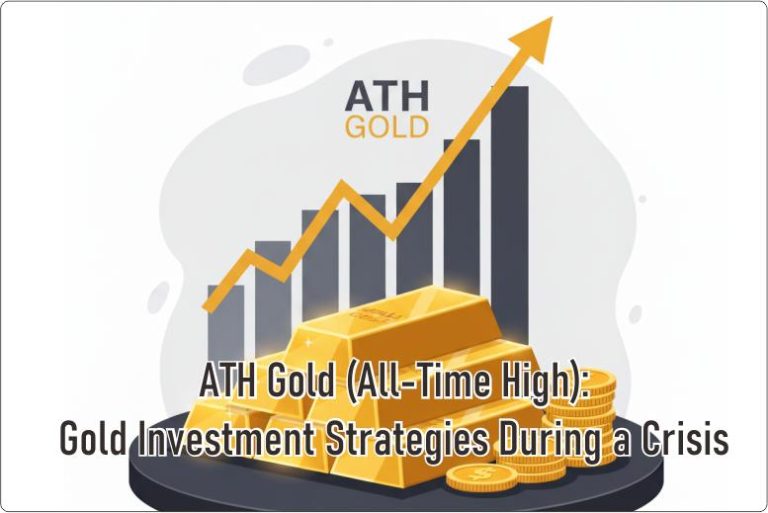
Over 70% of retail forex traders lose money. That’s not just a statistic—it’s a reality check.
They’ve read the books, studied the charts, memorized the candlestick patterns, and can explain indicators like RSI, MACD, and Bollinger Bands in their sleep. Yet when it comes to trading with real money, they consistently end up in the red.
Why? Because there’s a gaping divide between knowing how to trade and actually succeeding in the markets.
In this article, we’ll explore the painful truth many traders eventually confront: technical skills are only part of the puzzle. Real-world trading demands more than chart analysis. It requires psychological resilience, discipline, risk management, and the ability to adapt when theory meets the chaos of live markets.
The Comfort of Theory
Most aspiring traders start their journey the same way: by learning technical analysis. They dive into chart patterns, indicators, and price action strategies. The theory makes sense. It’s logical, structured, and feels manageable.
In theory:
- A head and shoulders pattern signals a reversal.
- A moving average crossover indicates a potential trend shift.
- Fibonacci retracements predict support and resistance levels.
This makes trading feel like a formula—if X happens, then Y should follow. It gives traders a false sense of security. The charts seem to speak a clear language, and the trader believes that with enough knowledge, profits will follow.
But here’s the trap: trading theories only work in a vacuum—they don’t account for the chaos, uncertainty, and emotional turmoil of real markets.
The Reality Check: Live Market Dynamics
Once traders go live, the market reveals its true face. Price movements become unpredictable, volatile, and often irrational. What looked like a textbook setup during backtesting can fall apart the moment real capital is on the line.
Live trading realities include:
- Sudden news events that nullify chart setups.
- Slippage, where orders don’t get filled at expected prices.
- Whipsaws, where price moves in one direction just to reverse instantly.
- Stop hunts, where price briefly spikes to trigger stop-loss orders before continuing in the original direction.
For example, imagine a trader identifies a classic ascending triangle breakout pattern. They enter long expecting a bullish move. But minutes later, an unexpected central bank statement causes a sharp reversal, wiping out their trade—despite the “perfect” setup.
The truth is: markets are influenced by more than just technical patterns. Theory assumes ideal conditions; the real market does not.
Psychological Factors That Undermine Technical Skill
If there’s one battlefield where traders lose more often than anywhere else, it’s in their own minds. Psychology plays a bigger role than most traders admit, and technical knowledge quickly crumbles under emotional pressure.
Common psychological traps:
- Fear: A trader hesitates to enter a valid setup or exits early, missing out on profits.
- Greed: Holding onto trades too long, ignoring exit plans in hopes of bigger gains.
- Revenge trading: Trying to recover losses with impulsive, high-risk trades.
- Overtrading: Taking unnecessary trades to feel productive, even without valid signals.
Cognitive biases also interfere:
- Confirmation bias: Ignoring signals that contradict an existing belief.
- Recency bias: Making decisions based on recent wins or losses rather than strategy.
Even the most skilled technical traders can fall victim to emotional decision-making when real money is at stake.
Poor Risk Management Habits
One of the fastest ways to destroy a trading account is poor risk management. Many traders focus so much on strategy that they neglect capital protection, which is the foundation of long-term success.
Common mistakes include:
- Risking too much per trade: Some traders risk 10% or more of their capital, leaving no room for error. Professionals often recommend risking no more than 1–2% per trade.
- Neglecting stop-losses: Trading without a stop-loss is like driving without brakes.
- Overleveraging: High leverage can magnify both profits and losses. A few bad trades can wipe out an account entirely.
- Chasing losses: After a few losing trades, some traders double their position size in desperation.
Ironically, many traders lose not because their strategies fail—but because they can’t survive long enough to see their edge play out.
Lack of a Proven Trading Plan
A trading strategy is not a trading plan. A true plan includes:
- Entry and exit rules.
- Position sizing.
- Risk-reward targets.
- Contingency responses to volatility or news.
Without a plan, traders tend to jump between strategies, chasing the next “holy grail” system. They don’t track their trades or review their performance. As a result, they repeat mistakes without realizing it.
Journaling and backtesting are essential. They allow traders to refine their methods, spot weaknesses, and measure their edge. But most traders skip this step—either out of laziness or overconfidence.
A successful trading journey requires consistency, and consistency only comes with a well-defined, personalized plan.
Ignoring Market Context and Fundamentals
Many technical traders adopt the “price reflects everything” philosophy. While this has merit, ignoring fundamental factors can be a critical mistake—especially in forex, where macroeconomic news and central bank decisions drive trends.
For instance:
- Trading purely on chart patterns during a Non-Farm Payroll (NFP) release is risky.
- A bullish technical signal can fail if it contradicts a dovish central bank outlook.
Blindly following technical setups without understanding market sentiment and context leads to low-probability trades. Traders who combine technicals with at least a basic understanding of economic indicators often have a competitive edge.
The Illusion of Control in Demo vs. Real Accounts
Demo trading builds confidence—but sometimes false confidence. Many traders do well on demo accounts, only to crash and burn once they switch to live trading.
Why?
- In a demo, there’s no emotional attachment to wins or losses.
- There’s no real financial consequence, so traders stick to their plan.
- Execution is often smoother in demos, without slippage or liquidity issues.
But once real money is on the line, everything changes:
- Fear creeps in.
- Hesitation delays entries.
- Small losses feel devastating, leading to irrational decisions.
The mindset shift is drastic. It’s not the strategy that fails—it’s the **trader’s reaction to pressure** that breaks everything.
The Path Toward Real Improvement
So how can traders bridge the gap between theory and profitable practice?
Here’s a roadmap:
- Develop Emotional Discipline
Recognize that emotions are part of trading. The key is to manage them—not eliminate them. Techniques like meditation, routine, and even therapy can help. - Use a Trading Journal
Track every trade. Include your reasoning, emotions, market conditions, and results. Over time, you’ll spot patterns in your behavior and strategy performance. - Backtest and Forward Test
Don’t just rely on live trading. Backtest your strategy on historical data. Then, forward-test it on a demo before risking real money. - Start Small
When going live, use a micro account. Focus on executing your plan perfectly, not on making profits. - Embrace Continuous Learning
Markets evolve. So should you. Read books, watch interviews, analyze your trades, and seek mentorship if needed.
Conclusion
Technical knowledge is necessary—but not sufficient.
Trading success doesn’t come from memorizing chart patterns or mastering indicators. It comes from executing a plan with discipline, managing risk, and controlling your emotions under pressure.
If you’re losing money despite your technical skills, it’s time to look beyond the charts. Evaluate your psychology, refine your risk management, and treat trading like the serious endeavor it is.
Ready to take your trading seriously?
Start by journaling your trades and reviewing your decisions—not just the outcomes. Turn theory into practice by becoming a student of both the markets and yourself.



